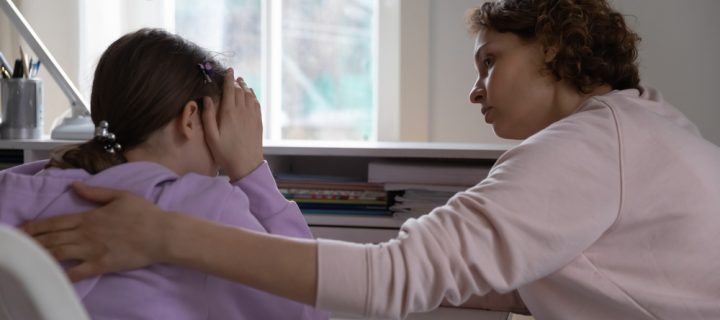Focus on the present, talk to teachers, and do what’s right for you.
Addressing your mental health is important, and especially so during the pandemic. While people facing serious cases of the virus, their families, and healthcare workers caring for the dying are likely carrying the heaviest mental burden of all at the moment, each of us feels the pull of the global crisis in our lives. Do you have kids in school, or are you teaching? Attending school yourself? Your anxiety could be running high.
How safe you are from catching COVID-19 inside a school building can depend on where you live. Regardless of your community’s situation however, there is no doubt that keeping a clear mind can be difficult.
New Social Distancing Rules
One source of anxiety is the constantly changing rules. Recently, the Centers for Disease Control and Prevention (CDC) changed its guidelines on social distancing in schools. Everything has shrunk. In schools with universal mask use, students can now be just three feet apart as opposed to six. Students need to stay six feet apart while in common areas outside the classroom and when doing things like eating, where they have to take their mask off, but when masks are on, three feet is now OK. Adults are still required to practice six feet of social distancing, however.
It might sound worrisome, but officials say this is being done in the name of looking after kids’ mental health.
“Given the crucial services schools offer and the benefits of in-person learning, it is critical for K-12 schools to open and remain open for in-person instruction, as safely and as soon as possible,” the CDC stated in its update. “Schools should be the last settings to close because of COVID-19 and the first to reopen when they can do so safely.”
Not everyone is buying into this change, however. According to the American Federation of Teachers about 80% of schools in the US are now teaching students in-person in one way or another but teachers unions are not entirely sure the three-feet rule is a good idea. The new rule relies considerably on ensuring that everyone is wearing a mask at all times. It also needs contact tracing to be done rigorously. The trouble is, this isn’t always possible in all places, such as in dense urban areas that could be lacking in pandemic essentials.
As such, it’s easy to see how the change in social distancing rules at schools alone could potentially cause your mental health to go awry. It’s not easy.
What You Can Do
Governments are helping out somewhat. In California, for example, CNN states about $2 billion might be given to schools to fund things like increased testing and contact tracing in lower-income areas in light of the pandemic. This would make the return to in-person learning safer. And in places like Washington DC, an area that also has a partial closure of schools in effect, families are being given a choice. Students can continue to learn remotely or go back to school face-to-face-it’s up to the individual family.
Of course, sometimes every choice seems far from perfect. Here are some tips for coping.
Make Decisions That Work for You
As mentioned above, going to school or staying home and learning remotely, are options in many places. If doing one or the other causes you or your kids to feel depressed or excessively worried, don’t do it, (if you can afford to). Consult with teachers and administrators about creating a situation that works for you and your child, as much as possible. If the options of in-person or remote learning don’t cut it for your situation, and you can swing it, consider homeschooling for the time being. Free courses online can allow your child to go at their own pace, and to learn offline as well.
Related: Gum Disease and Coronavirus
Attending school in-person but finding it stressful? Take ‘stress’ days. Being on high-alert impedes learning, and there is no sense forcing yourself or your child through a daily grind that is counterproductive. Engage in mental breaks and celebrate the small achievements.
Check Out Online Mental Health Resources
The Child Mind Institute with offices in New York and California has online resources for helping your child go back to school during the pandemic. Consult their website for ideas like communicating with teachers about your troubles, and doing practice runs to school before the actual day of return.
Remind your kids, and yourself, that you are trying to tolerate uncertainty. Try not to pass on your worries. The less parents worry about the coronavirus, the less children will do so.
“The treatment for anxiety isn’t to make the fear go away,” said Jerry Bubrick, PhD, a clinical psychologist at the Child Mind Institute, “it’s to manage the fear and tolerate uncertainty.”
“I think we have to be mindful of the present and stay focused on what is actually happening and not let ourselves go to worst case scenarios,” Bubrick added. “If we’re showing our kids catastrophic thinking and head-in-your-hands worry… then they’re going to learn that’s the way to handle the times now.”
Bubrick suggests focusing on the present. Practice mindfulness. Stick to routines for familiarity, and check in with your kids. Be on the lookout for the signs of anxiety which can include headaches, stomach aches, moodiness, trouble sleeping, and tantrums. Finally, set boundaries and search for the positives.
Cases of the coronavirus have been dropping in recent weeks at the time of this writing, in the US, to levels akin to those seen late last summer and into early fall. While we are not free from difficult times yet, the COVID-19 vaccines are helping to bring the end of the pandemic closer. If you are eligible and able to get the coronavirus vaccine, health experts are encouraging the public to do so as soon as possible. Call your doctor to book your vaccine.
photo credits: fizkes/Shutterstock.com












